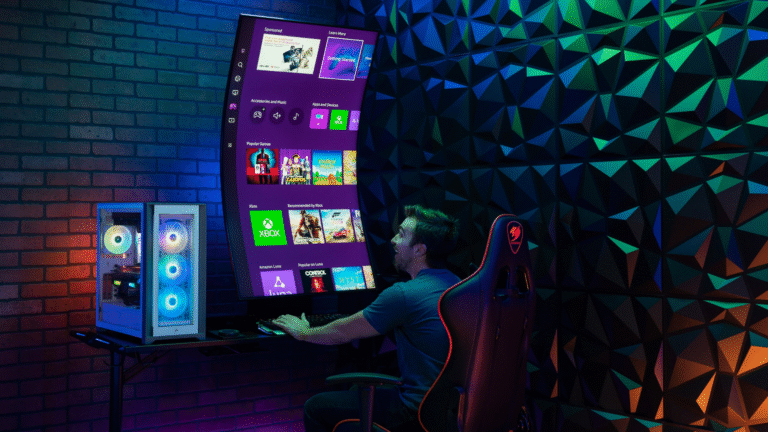How Advanced Infotainment is Revolutionizing Your Drive
Remember when the most exciting technology in your car was a cassette player? Those days are long gone. Modern vehicles have become rolling entertainment centers, communication hubs, and digital assistants all wrapped into one sleek dashboard interface.
Current Infotainment Features Reshaping the Road
Navigation Systems That Think Ahead
Gone are the days of frantically scribbling directions on napkins. Modern navigation systems use real-time traffic data, weather conditions, and even your calendar appointments to suggest optimal routes. They can reroute you around accidents before you even know they’ve happened, and some systems learn your driving patterns to offer personalized suggestions.
Entertainment That Never Stops
Streaming services have found their way into your vehicle, transforming long commutes into concert halls or podcast studios. Passengers can enjoy Netflix during road trips, while drivers benefit from curated playlists that adapt to driving conditions. The integration goes beyond simple Bluetooth connectivity—many systems now offer dedicated apps and interfaces designed specifically for automotive use.
Connectivity That Keeps You Linked
Your car has become another connected device in your digital ecosystem. Wireless charging pads, multiple USB ports, and Wi-Fi hotspots ensure everyone stays powered and connected. Smart integration with smartphones means your car can start before you reach it, adjust climate settings based on your preferences, and even order your coffee on the way to work.
Advanced Technologies Driving the Future
Artificial Intelligence Takes the Wheel
AI-powered infotainment systems are learning to anticipate your needs before you express them. These systems analyze your driving patterns, preferred routes, and even biometric data to create a personalized experience. Some vehicles can detect driver fatigue through steering patterns and suggest break times or coffee shops along your route.
Machine learning algorithms continuously improve system performance by studying user interactions. The more you use voice commands, the better the system becomes at understanding your accent, speech patterns, and preferences.
Augmented Reality Transforms the Windshield
Augmented reality (AR) is moving beyond smartphones and into automotive displays. Head-up displays now project navigation arrows directly onto the road ahead, while side mirrors can highlight potential hazards in blind spots. Some luxury vehicles feature AR windshields that can display restaurant reviews as you drive past or highlight the exact lane you need for upcoming turns.
This technology reduces the need to look away from the road, making driving safer while providing more information than ever before. The integration feels natural—like having a co-pilot who knows exactly what you need to see.
Voice Control That Actually Works
Early voice recognition systems were notorious for misunderstanding commands and frustrating drivers. Modern systems have overcome these limitations through advanced natural language processing. You can now have conversational interactions with your vehicle, asking complex questions like “Find a gas station with good coffee on my route home” or “Remind me to call Mom when I get to the office.”
These systems work even in noisy environments and can distinguish between different passengers’ voices, providing personalized responses and access to individual profiles and preferences.
See also: Innovations in Candle Boxes Materials and Technology: Rethinking Packaging Methods
Benefits That Go Beyond Entertainment
Enhanced Safety Through Integration
Advanced infotainment systems contribute significantly to road safety. By centralizing controls and reducing the need to handle multiple devices, drivers can keep their attention on the road. Voice commands eliminate the need to look away from traffic, while predictive navigation helps avoid dangerous situations.
Emergency features integrated into infotainment systems can automatically call for help in case of an accident, transmit location data to emergency services, and even communicate with other vehicles to prevent chain-reaction collisions.
Personalized Comfort and Convenience
Modern infotainment platforms create truly personalized environments. They remember your seat position, climate preferences, favorite radio stations, and frequent destinations. When you approach your vehicle, it can automatically adjust everything to your preferences before you even get in.
For families sharing vehicles, profile switching allows each driver to instantly access their personalized settings, from navigation preferences to entertainment choices. Car audio installations like those in Utah can be customized to work seamlessly with these advanced systems, ensuring optimal sound quality for each user’s preferences.
Increased Vehicle Value and Appeal
Vehicles equipped with advanced infotainment systems typically retain higher resale values and appeal to a broader range of buyers. These systems represent a significant portion of what consumers consider when purchasing new vehicles, often influencing buying decisions as much as traditional factors like fuel efficiency and reliability.
Navigating Challenges and Future Trends
Security and Privacy Concerns
Connected vehicles create new cybersecurity risks that manufacturers must address. Protecting personal data, preventing unauthorized access to vehicle systems, and ensuring software updates don’t introduce vulnerabilities are ongoing challenges. The industry is developing new standards and protocols to address these concerns while maintaining functionality.
User Interface Complexity
As infotainment systems become more capable, they risk becoming overwhelming. Designers are working to balance feature richness with intuitive operation. The challenge lies in providing access to advanced capabilities while keeping primary functions simple and accessible.
Integration with Smart Cities
Future infotainment systems will communicate not just with other vehicles, but with traffic infrastructure, parking systems, and city services. This vehicle-to-everything (V2X) communication will enable features like automatic parking payments, dynamic route optimization based on city-wide traffic patterns, and coordination with traffic lights to reduce stop times.
Sustainability and Electric Vehicle Integration
As electric vehicles become mainstream, infotainment systems are evolving to support new needs like charging station location, battery management, and energy-efficient route planning. These systems will play crucial roles in making electric vehicle ownership more convenient and accessible.
Conclusion
The future of automotive infotainment extends far beyond entertainment and navigation. These systems are becoming the foundation for autonomous driving capabilities, smart city integration, and completely reimagined transportation experiences.






